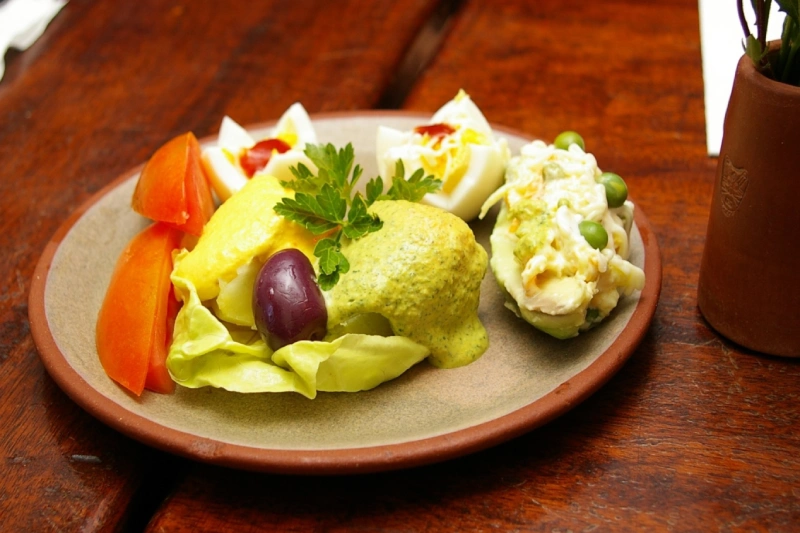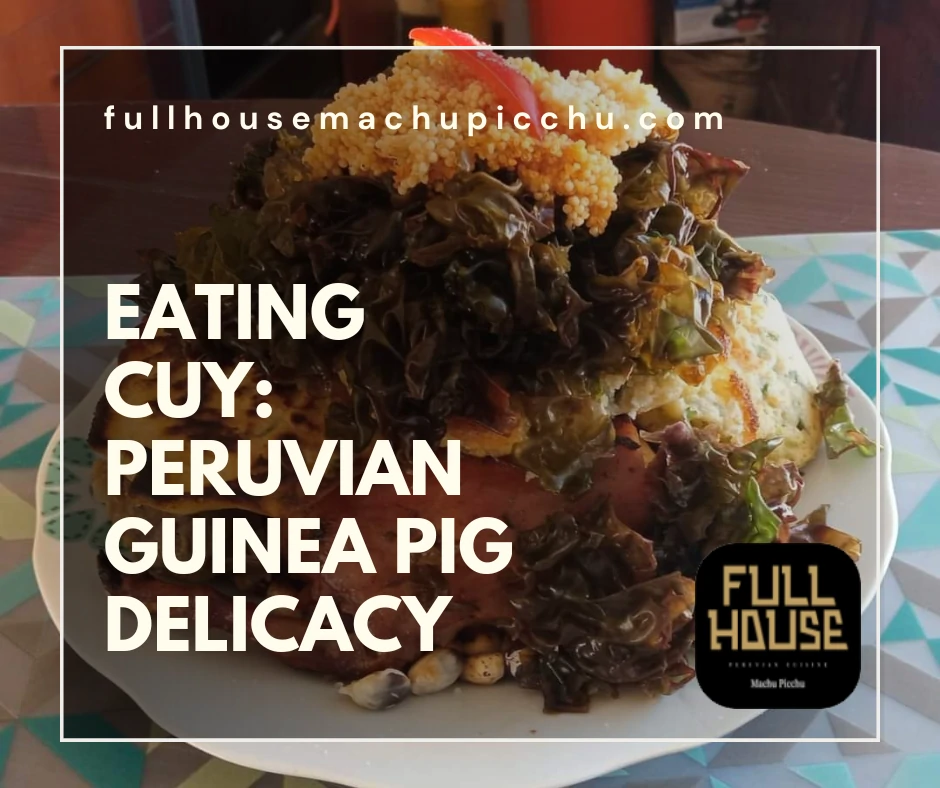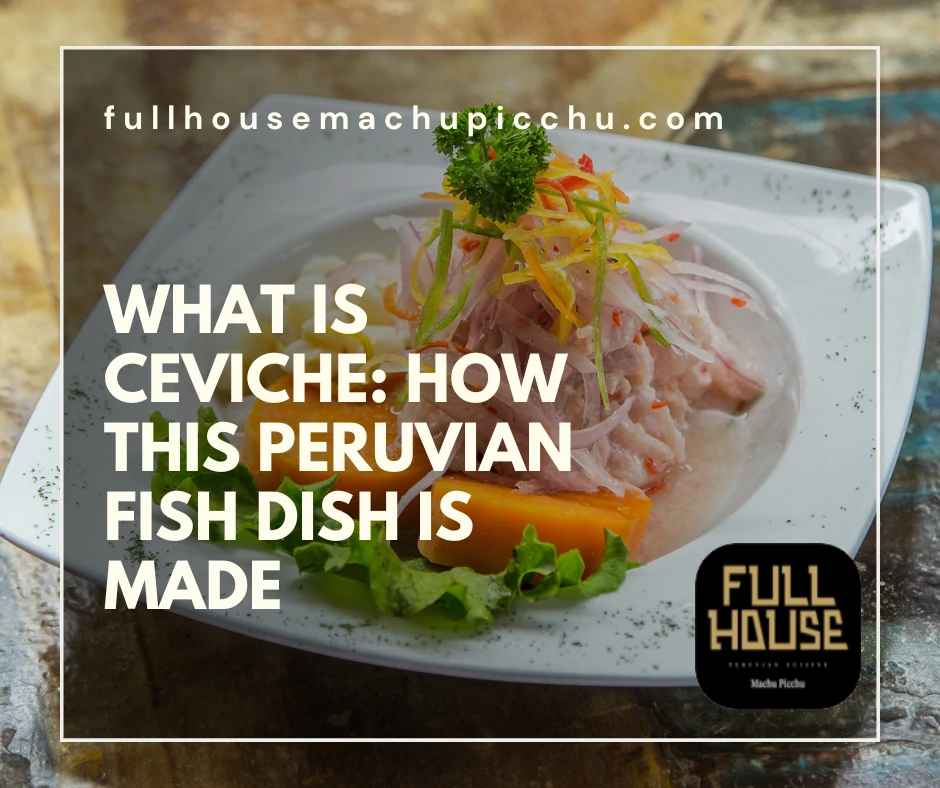In all the vastness Peruvian cuisine offers, Peru’s plant-based dishes are remarkable.Discover these vegetarian treasures.
Our exploration takes us beyond traditional perceptions of Peruvian cuisine. We dive into a world where vegetables are the stars. It’s an adventure that promises both delight and surprise.
Join us as we uncover the hidden gems of Peru’s vegetarian scene. From highland grains to Amazonian fruits, the diversity astounds. Every dish tells a story of culture, tradition, and innovation.
Whether you’re a seasoned vegetarian or a curious foodie, this guide is for you. Get ready to experience the vibrant heart of Peru’s plant-based cuisine. And if you visit, maybe try some with us in our menu.
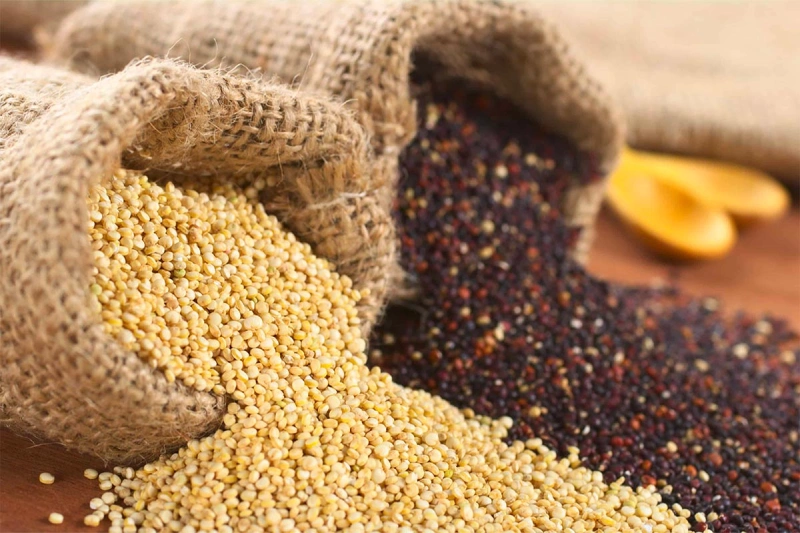
Green Gold: The Rise of Superfoods in Peruvian Cuisine
In recent years, Peru has gained global recognition. A treasure trove of plant-based superfoods. These ingredients have transformed not just local plates but also the world’s perception of nutrition and wellness.
Peruvian cuisine offers more than just tantalizing flavors. It presents a gateway to health and vitality, thanks to its rich array of superfoods. This journey into Peru’s green gold uncovers the essence of these powerful ingredients.
Superfoods in Peru go beyond trendy labels. They are the heart of traditional diets, revered for their nutritional benefits. These ancient crops have found their way into modern kitchens, redefining health eating.
Ancient Roots, Modern Plates
Quinoa leads the pack, a grain known for its versatility and protein content. Once the Inca’s “mother grain,” it now graces tables worldwide. Its adaptability makes it a staple in Peru’s plant-based dishes.
Then there’s maca, thriving in the harsh Andean highlands. This root boosts energy and endurance, embodying resilience. Its inclusion in smoothies and desserts showcases the blend of tradition and innovation.
Lucuma, with its sweet, maple-like flavor, adds natural sweetness to desserts. Dubbed the “Gold of the Incas,” it enriches Peru’s plant-based dishes with its vitamins and minerals.
A Colorful Palette of Nutrition
Peruvian superfoods also shine in their vibrant colors and diverse textures. Aji amarillo peppers bring heat and a dose of antioxidants. Their fiery presence is a testament to the boldness of Peruvian flavors.
Purple corn, with its deep hues, offers anthocyanins, powerful antioxidants. It stars in chicha morada, a refreshing drink, and exemplifies the healthful creativity of Peru’s cuisine.
Camu camu rounds out this colorful array. Its staggering vitamin C content surpasses that of any other known plant. This berry enhances juices and smoothies, adding a tangy zest.
Sustainability and Superfoods
The rise of these superfoods also highlights sustainability. Peru’s farmers cultivate them with respect for the earth. This approach ensures the preservation of both the environment and ancient practices.
Sacha inchi, or Inca peanut, is rich in Omega-3, 6, and 9 fatty acids. Grown sustainably in the Amazon, it supports both the ecosystem and local communities. Its seeds are a crunchy addition to Peru’s plant-based dishes.
This sustainable ethos extends to the global stage. As demand grows, so does the commitment to ethical farming. Peru’s superfoods thus carry stories of environmental stewardship and cultural heritage.
A Global Influence
Peru’s superfoods have not just transformed local dining. They have made a mark on the global culinary scene. Chefs worldwide incorporate these ingredients, drawn by their health benefits and unique flavors.
This global embrace has sparked interest in Peru’s culinary traditions. It has opened doors for fusion dishes, where Peruvian superfoods meet international flavors. This culinary exchange enriches global dining experiences.
Moreover, the popularity of these superfoods has boosted Peru’s economy. It has created new opportunities for farmers, elevating the nation’s profile on the world stage. Peru’s plant-based dishes have thus become ambassadors of its rich cultural and agricultural heritage.
A Healthful Legacy
The story of Peru’s superfoods is more than a culinary trend. It’s a testament to the enduring power of nature’s bounty. These foods offer a path to wellness rooted in ancient wisdom and modern science.
They remind us that the best of health often comes in natural packages. Peru’s plant-based dishes, rich in superfoods, are not just meals. They are nourishment for both body and soul.
In embracing these ingredients, we partake in a tradition that spans centuries. We also contribute to a sustainable future, where food is both medicine and a source of joy.
Peru’s green gold is a gift to the world. Its superfoods invite us to explore new tastes, embrace health, and celebrate the richness of Peruvian cuisine.
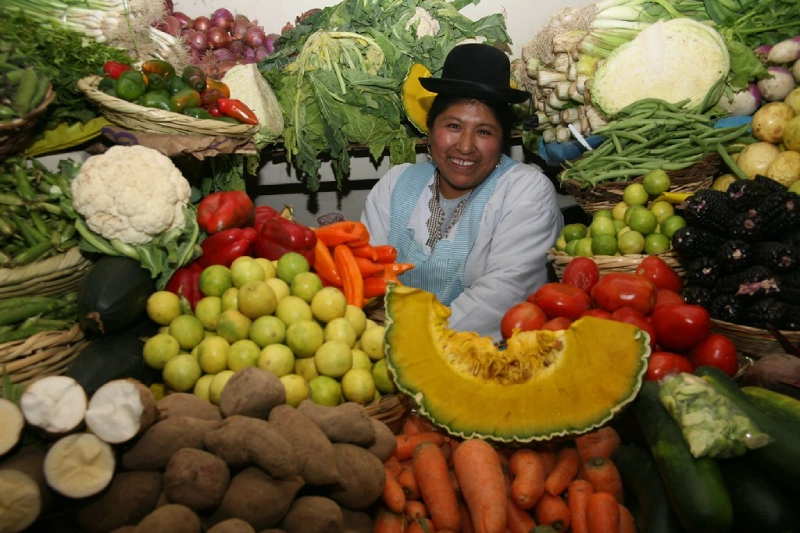
From Market to Table: A Journey Through Peru’s Vegetable Bounty
Peru’s markets are a kaleidoscope of colors, aromas, and textures. Here, vegetables take center stage, showcasing the country’s rich biodiversity. This abundance fuels Peru’s plant-based dishes, a testament to its vibrant culinary heritage.
Farmers across the country harvest a variety of crops, thanks to Peru’s unique geography. From the Andes to the Amazon, each region contributes its own specialties to Peruvian cuisine.
Organic farming practices are widespread, reflecting a deep respect for nature. This commitment ensures that vegetables not only taste better but are also healthier. It’s this access to fresh, organic produce that elevates Peru’s plant-based dishes to new heights.
The Heart of Peruvian Cuisine
Central to many Peruvian dishes is the humble potato. With over 3,000 varieties, it’s a staple in homes and restaurants alike. Yellow potatoes, particularly, are cherished for their creamy texture and flavor.
Aji amarillo, a vibrant yellow chili pepper, adds a distinctive kick. It’s a key ingredient in sauces and stews, infusing meals with its warm, fruity heat. This pepper illustrates the balance of flavors that defines Peruvian cuisine.
Lime juice and red onion are other pillars of the culinary landscape. They’re essential in ceviche, a beloved dish in Peru, often served cold. This combination of tangy and sharp flavors highlights the freshness of local produce.
A Feast for the Senses
Walking through a Peruvian market is an invitation to explore. Stalls overflow with onions, garlic, sweet potatoes, and an array of chili peppers. Each ingredient plays a crucial role in the country’s gastronomic creations, from stir-fries to salads.
Peruvian cuisine is renowned for its innovative use of vegetables. Dishes like causa, a layered potato dish, often include boiled egg, boiled potato, and lime juice. It’s a perfect example of how simple ingredients can create something extraordinary.
Sweet potatoes find their way into both savory and sweet dishes. Deep fried or baked, they add a natural sweetness.
Sustainability on the Menu
Peru’s commitment to organic produce is not just about taste. It’s also about sustainability. By prioritizing organic farming, the country protects its rich ecosystems while providing healthy food options.
This approach supports small-scale farmers and promotes biodiversity. It’s a model of how agriculture can work in harmony with the environment. Peru’s plant-based dishes are thus not only delicious but also eco-conscious.
In Lima and beyond, restaurants showcase these sustainable practices. A visit to a Peruvian restaurant often includes vegan Peruvian options, celebrating the country’s vegetable bounty. It’s a way to experience Peru’s commitment to sustainability firsthand.
Flavors That Tell a Story
Every Peruvian dish tells a story of cultural fusion and history. Ingredients like soy sauce hint at the influence of Asian immigrants on Peruvian cuisine. They contribute to the unique flavors of dishes like lomo saltado.
The use of chili peppers, from aji amarillo to rocoto, speaks to the indigenous roots of Peruvian cuisine. These flavors are part of the region’s diet, long before the Colonial times.
Peru’s plant-based dishes, therefore, are a journey through time and culture. They reflect the country’s diverse influences and its ability to blend them into something new and exciting.
A Global Appetite for Peruvian Vegetables
The popularity of Peruvian cuisine has grown worldwide. International diners are drawn to its bold flavors and healthful ingredients. The global demand for Peruvian superfoods, like quinoa and aji amarillo, underscores this trend.
This international appeal has opened up new markets for Peruvian farmers. It has also introduced the world to the delights of Peruvian plant-based dishes. As a result, more people are discovering the health benefits and flavors of these meals.
Restaurants around the globe now feature Peruvian-inspired menus. They offer dishes that highlight the rich vegetable bounty of Peru. This global recognition is a testament to the universal appeal of Peruvian flavors.
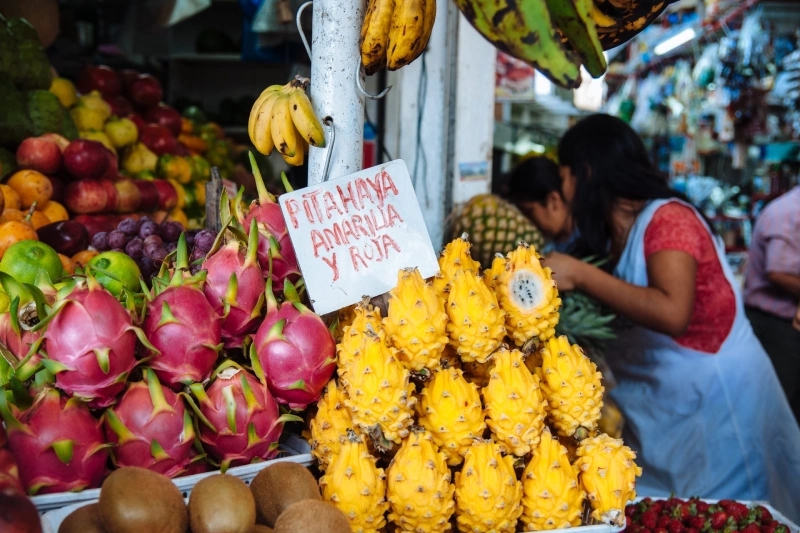
Culinary Craftsmanship: Innovative Vegetarian Dishes from Peru’s Top Chefs
In the heart of South America, Peru’s top chefs are reimagining vegetarian cuisine. They transform simple ingredients into culinary masterpieces. This revolution brings Peru’s plant-based dishes to the forefront of the gastronomic world.
Peruvian cuisine, with its rich history and diverse influences, is a perfect canvas for innovation. Vegetables, grains, and legumes become the stars of the plate.
Among the favorites is soltero de queso, a refreshing salad bursting with color and flavor. It combines boiled potatoes, fava beans, and cheese with a vibrant dressing. This dish showcases the balance and freshness central to Peruvian vegetarian cuisine.
A Journey Through Flavors
Papa a la huancaina is another classic, reinterpreted by chefs with a modern twist. Yellow potatoes lay the foundation for a creamy, spicy sauce made from aji amarillo. Served cold, it’s a testament to the power of simplicity in Peruvian dishes.
Quinoa, a superfood native to the Andes, is a staple in vegan Peruvian recipes. Chefs use it in salads, stir-fries, and even desserts, highlighting its versatility. Its nutty flavor and high protein content make it a favorite.
Peruvian cuisine is not shy about using bold flavors. Lime juice, chili peppers, and red onion are essential. They add depth and zest to dishes, elevating the humble vegetables to new heights.
Innovation at the Table
Peru’s plant-based dishes are evolving, thanks to the creativity of its chefs. They experiment with textures and flavors, introducing ingredients like sweet potato and soy sauce into traditional recipes. This fusion creates a unique dining experience.
In Peruvian restaurants, these vegetarian dishes are not just an afterthought. They stand proudly alongside meat-based options, attracting both vegetarians and meat-eaters alike. This inclusivity is a hallmark of the country’s culinary scene.
Aji de gallina, traditionally a chicken dish, gets a vegetarian makeover. Chefs replace the chicken with artichokes or potatoes, but keep the creamy, spicy sauce. It’s a delicious example of how traditional dishes can adapt to modern tastes.
Craftsmanship and Sustainability
Behind these innovative dishes is a commitment to sustainability. Peru’s chefs prioritize local, organic produce. This not only supports local farmers but also ensures the freshest ingredients in their creations.
The use of aji amarillo, a staple in Peruvian cooking, exemplifies this. This chili pepper adds a kick to many vegetarian dishes, from sauces to stews. Its cultivation supports biodiversity and sustainable farming practices.
Peru’s culinary experts also explore underutilized vegetables, bringing them into the limelight. This approach reduces food waste and encourages a more diverse diet. It’s a win-win for both the environment and the diner.
A Global Influence
The innovation in Peru’s plant-based dishes has not gone unnoticed. Around the world, chefs draw inspiration from Peruvian cuisine. They incorporate elements like lime juice, quinoa, and aji amarillo into their vegetarian offerings.
This global exchange enriches the culinary landscape. It introduces new flavors and techniques, broadening the appeal of vegetarian food. Peru’s influence is a testament to its culinary excellence and creativity.
Peru’s plant-based dishes represent more than just food. They are a celebration of culture, tradition, and innovation. These dishes invite diners on a journey through the flavors of South America, one bite at a time.
A Culinary Revolution
The culinary craftsmanship of Peru’s top chefs is redefining vegetarian cuisine. With each dish, they challenge the conventional, turning simple ingredients into extraordinary experiences. Peru’s plant-based dishes are a testament to this culinary revolution.
From soltero de queso to innovative quinoa creations, these dishes celebrate the richness of Peruvian agriculture. They reflect a deep respect for the environment and a commitment to sustainability.
